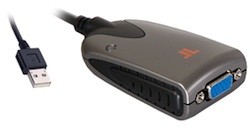cloud-client.info IGEL Universal Management Suite Appliance for Microsoft Hyper-V
———————————————————————————
Version: 2.0
Release Date: 21.12.2012
Copyright 2012 cloud-client.info
EMail: blog@cloud-client.info
This is a non commercial release without any official support by IGEL Technology or cloud-client.info.
Use on your own risk, the publisher is not responsible for any damage or issue related to the use
of this free release.
Requirements for the VM:
2 GB RAM
20 GB HDD
Donate:
If you want to invite me to a beer for my work, just make a donation via
https://www.paypal.com/cgi-bin/webscr?cmd=_s-xclick&hosted_button_id=EGTTX7B49U56G
Getting started:
Copy the folder cloud-client.info IGEL UMS Appliance 2.0 to your Hyper-V VM folder.
Import the VM via the Hyper-V console and set the Network Card to the Network you want to connect to.
Start the VM, by default the VM will pick up a DHCP address. If you want to use a static IP you can
configure this in the DHCP Server by assigning a IP to the VM’s MAC-ID (see below).
After the vm is startet open the VM console and login to the System with the username igel (credentials
see below. Now you can assign also a static IP (Network setup is on the right in the top menu).
On the desktop you can see two links to open the UMS console or administrator tool.
Note: I’ve setup default directory rules, new clients will directly moved to the device folder. You can
motify this of course depending on your needs.
Tested with:
Windows 8 Hyper-V
Windows Server 2012 Hyper-V
Hyper-V Server 2012
Users:
Default User: igel Password: igel
Root User: root Password: igel
IGEL UMS Main User: Administrator Password: igel
IGEL UMS Sub Admin User: igel Password: igel
FTP User: igel Password: igel
Operating System:
Ubuntu 12.04
Network:
Hostname: umsappliance
IP: DHCP
MAC-ID: 00-15-5D-67-3E-08 (Do not change the MAC-ID!)
Installed Services:
IGEL Unversal Management Suite 4.03.100 with enabled automatic registration for thin clients (DHCP or DNS entry required!) incl. cloud-client.info UMS Template 1.0.40
Telnet Service
VNC Service
Firewall (Disabled by default)
XDMCP connections enabled (Free Windows XDMCP Client=http://sourceforge.net/projects/xming/files/)
RDP connections enabled, the appliance do now accept RDP connections done by any RDP client incl. Microsoft’s MSTSC.exe
Changelog:
2.0
—
– Changed from CentOS to Ubuntu 12.04
– Updated IGEL Universal Desktop Suite to Version 4.03.100
– Updated cloud-client.info UMS Template Version 1.0.40
– Removed IGEL Manuals, visit www.myigel.com to get the latest
– Increased HDD to 20 GB
– Switched from VHD to VHDX format for the appliance
– Optimized for Windows Server 2012, Hyper-V Server 2012 and Windows 8 Hyper-V use
– Using xfce4 as window manager default
– Changed hostname to umsappliance to prevent DNS issues with a existing IGEL Management Server
– Added /umspub folder which is used as UMS Snapshots – File source
– Default user igel now got full linux file system access (default /) if logged in via FTP
– Improved desktop integration for the UMS Administrator and Console compared to the old appliance
– The appliance do now accept incomming RDP connections, use MSTSC.exe to connect and setup the appliance.
– New static Mac-ID assigned: 00-15-5D-67-3E-08
Download: Offline, download latest Version
Have fun!
Michael
P.S.: The old CentOS based appliance is discontinued and not available as download anymore. The youtube video will be also refreshed in the upcoming day’s to the new version.












